9. Julianne Moore – Still Alice (2015)
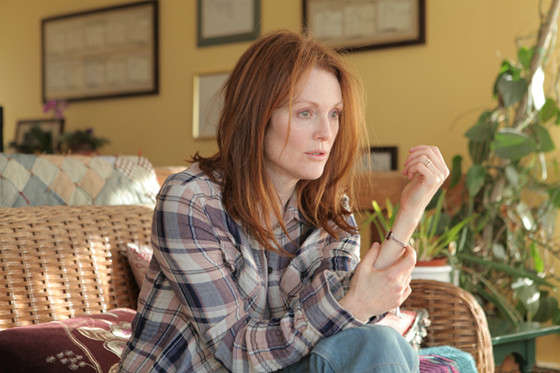
The talented Julianne Moore plays the title role in this low-profile family drama about a woman in her 50s with rapidly evolving early onset Alzheimer’s disease. Alice has achieved everything a woman could dream of: she has a successful academic career as a linguistics professor at Columbia University; she has a caring husband and three wonderful children; she has a lovely house by the beach; she has traveled around the globe.
And one day she realizes that her memory is fading, that something is ‘eating’ her cerebral cells. As the diagnostics are rather bad, she has to face, together with her loving family, the fact that after a short while she will stop being herself and she will fall into total amnesia and incapacity.
Moore finds herself at her best in this story, where conflicts happen mostly inside their characters’ heads than outside. She uses her extremely calm and expressive face to depict the inner struggle of a woman trying to grasp the last moments of her soon-to-be-lost reality, and mostly, to keep her memories.
With few interpretive crescendos, she manages to draw the course of the disease through all the steps, the realization, panic, sorrow, acceptance throughout the expression of the eyes and her sweet smile. Maybe more than winning an Oscar, Golden Globe and BAFTA for this movie, she gets us to know and, maybe, understand people next to us who suffer from this disastrous disease.
8. Meryl Streep – The Iron Lady (2012)
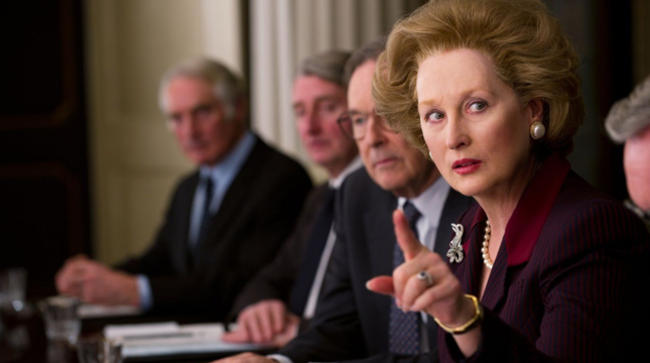
What would it be like to play the role of one of the most detested politicians in modern British history, in a film whose script can be hardly enciphered as to its political intentions? For Meryl Streep, it was certainly a great challenge. The two-time Oscar winner with more than 10 nominations was maybe the only one who could handle a dubious portrait of the British Iron Lady as an old woman suffering from dementia with scintillations of her past life and glory.
In this film that neither beatifies nor condemns Thatcher, as it approaches the more human side of her, that of old age, sickness and inability, Streep added her personal mastery to bring a breath of reality to a person but, as Roger Ebert notes, “She’s all dressed up with nowhere to go.”
Unlike the case of Marion Cotillard, who skyrocketed a weak script with an unparalleled performance, Streep’s talent and experience was not enough to give body to a scenario that was not leading anywhere, and left both supporters and opponents of Margaret Thatcher unsatisfied. Nevertheless, Streep had done such a job – with the help of makeup artists, who also won an Oscar – that she deservedly won the Best Actress Oscar that year.
7. Helen Mirren – The Queen (2007)
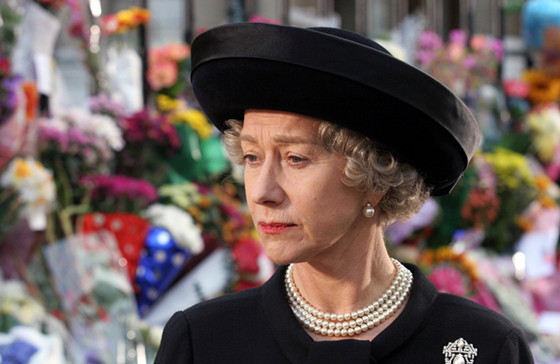
A highly appraised movie with a highly-praised performance, “The Queen” focuses on the critical 10 days after Princess Diana’s death, and the reactions of the royal family and the newly-elected Prime Minister Tony Blair.
Helen Mirren was very well fitted in the role of Queen Elizabeth II, most notably because of her facial similarity with the Queen. More than that, she acquired this very British and monarchical phlegm that is characteristic of Queen Elizabeth and many members of the royal family.
The plot, intended only to highlight a very special moment of modern British history, tries to be the neutral observant of the divergence between the two poles of institutionalized power in the U.K., and to not offend the feelings of the pro-monarchy audience. Mirren acted in that direction: she portrayed a strict, proforma and reserved lady who has limited emotional reactions, which are not portrayed in plain sight – she turns her back to the audience to cry. In other words, Mirren is Queen Elizabeth in this movie.
For all the above she received a five-minute-long standing ovation, the BAFTA, awards at the Toronto and Venice Film Festivals, and Oscar for Best Actress.
6. Cate Blanchett – Blue Jasmine (2014)
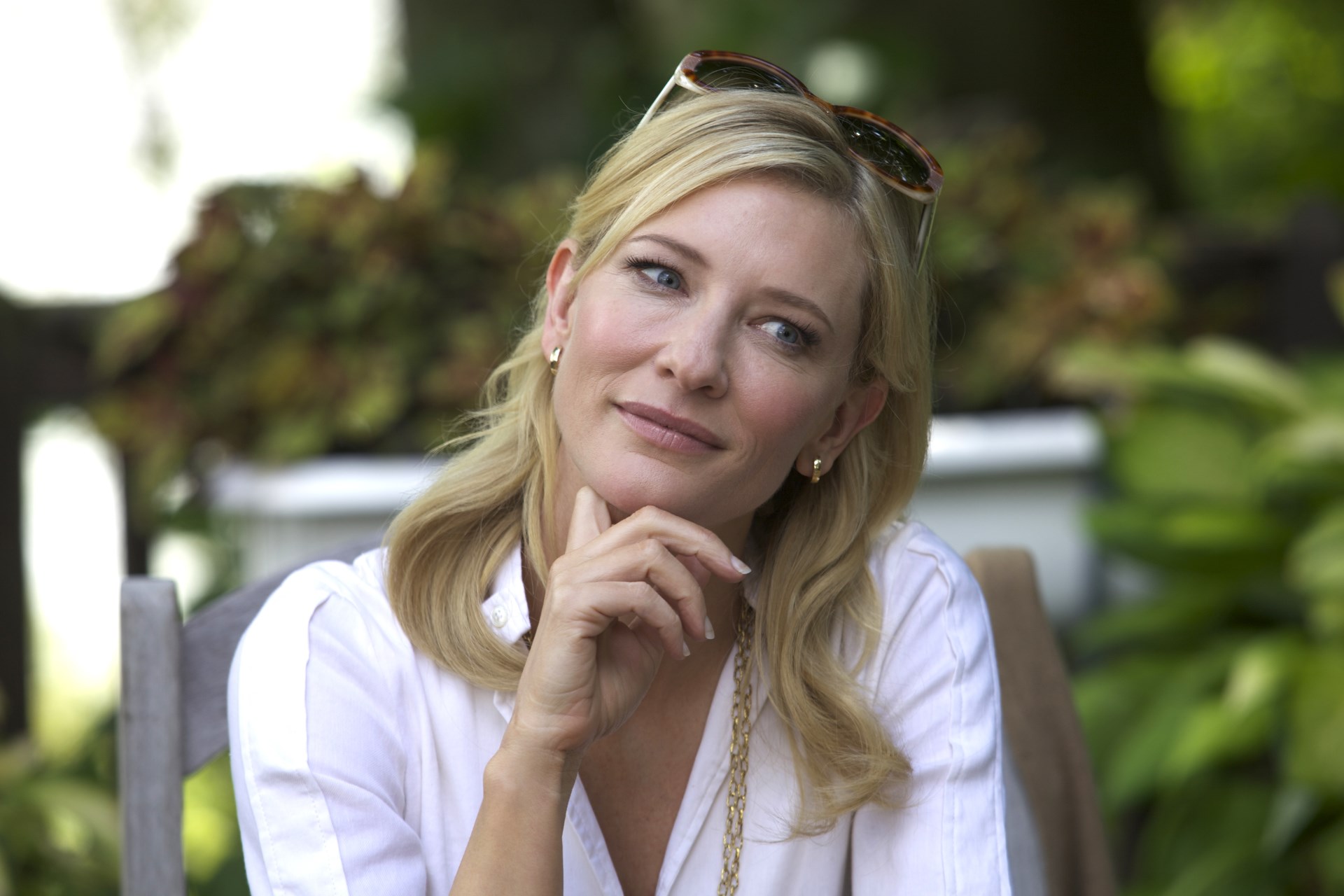
Cate Blanchett is the brilliant star of one of Woody Allen’s most powerful dramedies, telling the story of a New York socialite who loses everything after denouncing her own husband for fraud, and searches for refuge in her sister’s modest house in San Francisco.
Even though Blanchett was an accomplished actress with an Oscar, a BAFTA, and Venice and Toronto Film Festival awards, known for her capacity to adopt even her facial features to the role she is playing, most critics agreed that this was probably the strongest role of her life.
There is a two-linear narrative in the movie. Scenes of a prosperous Jasmine in New York, living in affluence and ignoring her husband’s cheating with other women are inserted to the narrative of the present, as the penniless Jasmine arrives in San Francisco and asks her once-scorned little sister for help. The structure of the narrative allows Blanchett to develop the character to the point of altering her face to depict mental stress and neurosis.
As an actress, she masterly controls her facial muscles and this is proven in “Blue Jasmine.” The New York socialite and the San Francisco homeless woman are not the same person; they don’t even share the same face. Her neurotic reactions are so genuine and convincing that critics talked of a ‘jaw-dropping work’ that led Blanchett to her second Oscar.
5. Kate Winslet – The Reader (2009)
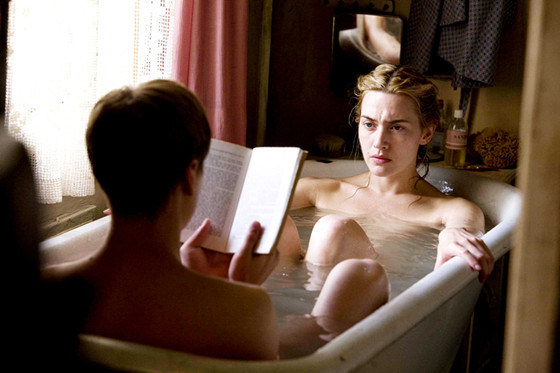
“The Reader” turned out to be a very controversial play, raising suspicions of sympathizing with Nazi criminals, soothing Holocaust atrocities, and accepting sex abuse of underage people. Nevertheless, everybody praised Kate Winslet’s performance as a senior concentration camp guard who has a passionate love affair with an adolescent, and then faces trial for letting 300 women die in a burning church during death marches from Poland in 1945.
Dealing with memories from World War II and the Holocaust is not an easy subject. Lumet in his latest work as a producer chose a challenging book, written by a German author, that treats the guilt of postwar Germany and at the same time depicts a peculiar, tender and passionate love story.
Winslet gives a strong, bravura performance both as the adolescent’s seducer, with rarely emotional erotic scenes, and mostly as a defendant for war crimes who ‘innocently’ affirms the right of her decision based on some incomprehensible sense of duty.
I don’t know whether Winslet knew or had read the “Banality of Evil,” the book that Hannah Arendt had written about the trial of Eichmann, one of the organizers of the Final Solution, and caused a lot of animosity among the Jewish community. In the trial scenes of the movie, Hanna’s apology could be directly paralleled with the banality of which Arendt spoke about. How can ordinary, insignificant people commit horrifying crimes when power is given to them.
Winslet approached a very difficult role in which she had to keep delicate balances between the introspection into a woman’s psychology and avoiding sentimental peaks, and she gave an amazing performance that absolutely deserved the Oscar.
4. Natalie Portman – Black Swan (2011)
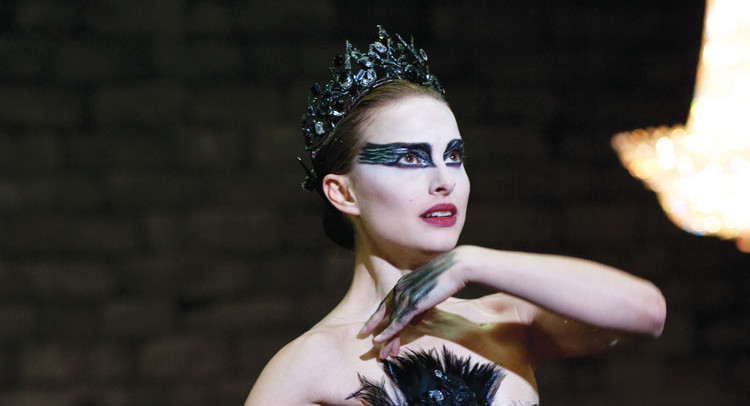
Playing the role of a ballerina in a highly demanding movie where you are the absolute protagonist and the camera almost never leaves you is not the easiest thing in the world. Natalie Portman wanted the role so much that she started taking ballet classes on her own expense one year before the release started.
The movie budget was so tight that most times she had to pay the physiotherapist herself. However, she achieved a bravura performance as Nina, a young ballet dancer concentrated on her art to the point of being absorbed by it.
Nina is rehearsing for “Swan Lake” with a demanding choreographer and she wants desperately the role of the Swan Queen, willing to do everything to get it. As she tries to survive and win in the harsh world of professional ballet, she loses balance between her aspirations and her mother’s precepts, lust and chastity, love and hate. Soon the rehearsals take a nightmarish course.
As Darren Aronofsky focused on the psychological processes of his heroine – the movie is described as a psychological horror film – Portman had to express by her body and her face the gradual descend of Nina in both ecstasy and lunacy. She managed to do that both in the dancing scenes and in the moments of psychological unnerving. And she danced a lot, including about 80 percent of the dancing scenes, as it was revealed after her dance double alleged that she did all the work for the movie.
Even though the film divided critics, Portman received acclamations for her performance by all of them, and won a Golden Globe, a BAFTA and the Oscar for Best Actress in Leading Role.
3. Brie Larson – Room (2016)
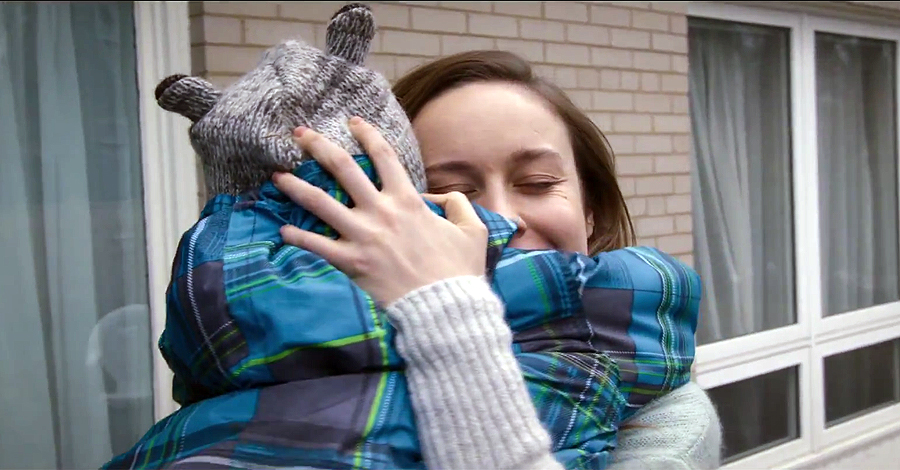
After a really good performance in “Short Term 12,” Brie Larson’s career boomed with her outstanding and engaging work in Lenny Abrahamson’s “Room.” Based on a novel by Emma Donoghue, the film is about the life of a young mother and her five-year-old son, who are trapped in a tiny 10-square-meter room by a psychopath who had kidnapped the mother some years ago, as well as their escape and the harsh period of adaptation to the world outside the ‘room.’
There were many candidatures for the role of Joy, Jack’s mother, but Abrahamson chose Larson after seeing her in “Short Term 12.” Larson took that role seriously from the first minute: she went on a special diet, she avoided daylight, and stayed at home for a month to really get the feeling of confinement. She did not wash her face during the release so that exhaust and despair would reflect on it.
As the first half of the film takes place in a very small place, the camera follows Larson’s and Jacob Tremblay’s face very closely, revealing every small detail of their expressions. And their performances are overwhelming. The chemistry between them is so potent and entraining, making the film an emotional wonder and an elegy to love that can overcome all barriers. Both audiences and critics loved it, made big box offices grosses and high ratings on most film review aggregation websites.
2. Marion Cotillard – La Vie en Rose (2008)
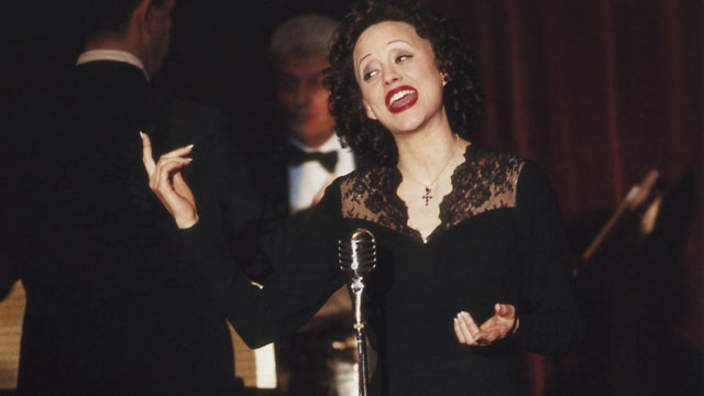
A great French actress interprets the life of a great – the greatest? – French singer. Marion Cotillard won an Oscar for her role as Edith Piaf. The film also won an Oscar for makeup, because makeup really transformed Cotillard’s face to portray Piaf in her later days.
But it was far more than this. Cotillard gave an astonishing performance, as she managed to depict with a ‘kamikaze-style intensity’ the complex personality of the great singer. Against a script that lacked cohesion in its narrative and was hazily structured, Cotillard achieved an inspired performance that gave life to the legend and helped us understand how Piaf passed from the streets to the stages, from loneliness to love and then back to loneliness.
Through her we could watch and understand the delicate nature of this extraordinary creature, her timidity and her need to be loved, the way she struggled until her very precocious end. Cotillard’s eyes and looks were matched with the songs and told on their own the story of “little sparrow.”
That was the first time that the Oscar for Best Actress went to a French-speaking actress. I believe deep inside that Cotillard felt honored to be chosen to interpret Edith Piaf. And she gave an inspiring, overwhelming performance, from the adolescent unknown street singer to the final, iconic scene when the sick, bowing Edith sings, “Je ne regrette rien.” Respect Marion!
1. Charlize Theron – Monster (2004)

How many times have we seen beautiful women transformed into monsters and yet, also giving a performance that captures the audience and wins an Oscar? South African actress Charlize Theron, after many B-movies, mainstream romantic dramas and some acclaimed films where she played leading roles next to great Hollywood stars (“The Cider House Rules,” “The Devil’s Advocate”), took on the role of Aileen Wuornos, the most notorious female serial killer.
It was Patty Jenkins’ first feature movie. She was strongly impressed by the story of the first female serial killer in U.S. history and she managed to gain access to hundreds of letters Wuornos had written in prison, with Wuornos’ consent. In that way, she wrote the script in only seven weeks, which depicted the realism and the psychological introspection into the chaos that reigned in Wuornos’ mind; the loneliness and despair, the seeking of love that drove her to insanity and crime.
Theron saw it as a challenge and took the leading role in a relatively low-budget indie movie. She ate many packets of potato chips to gain the 14 kilos needed for the role, she let makeup deform her complexion, and she wore prosthetic teeth. But far more than that, she managed to become Aileen Wuornos, to dive into the abyss of madness of her heroine, to bring out the human side of a wild creature that was brought up on the streets as a hooker and the only human contact she ever had was abuse and rape.
Roger Ebert named “Monster” the “Film of the Year” and describes Theron’s performance as “an achievement, an embodiment, one of the best performances in the history of cinema.” With so many credits, this performance could be nothing else than number one in the list.